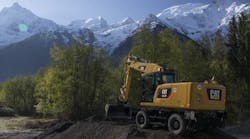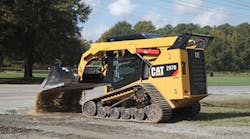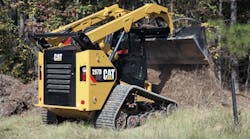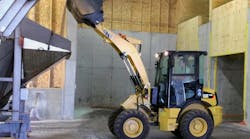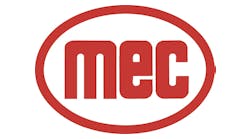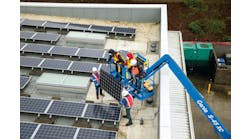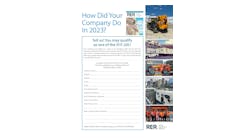Caterpillar’s third quarter 2015 sales and revenues were $10.96 billion, down from $13.55 billion in the third quarter of 2014, a 19.1-percent plunge. Profit per share was $0.62 for the third quarter, compared to $1.63 in the third quarter a year ago. Machinery, energy and transportation sales dropped 19 percent while Financial Products revenues plunged 14 percent.
“The environment remains extremely challenging for most of the key industries we serve, with sales and revenues down 19 percent from the third quarter last year,” said Caterpillar chairman and CEO Doug Oberhelman. “Improving how we operate is our focus amidst the continued weakness in mining and oil and gas. We’re tackling costs, and our year-to-date decremental profit pull through has been better than our target. We’re also focusing on our global market position, and it continues to improve even in challenging end markets. Our product quality is in great shape, and our safety record is among the best of any industry company today.
“Our strong balance sheet is important in these difficult times. Our ME&T debt-to-capital ratio is near the middle of our target range at 37.4 percent; we have about $6 billion of cash, and our captive finance company is healthy and strong. We’ve repurchased close to $2 billion of stock in 2015 and more than $8 billion over the past three years. In addition, the dividend, which is a priority for our use of cash, has increased 89 percent since 2009.”
Restructuring actions recently announced, including up to 10,000 job cuts, are expected to lower operating costs by about $1.5 billion annually once fully implemented, with about $750 million of that expected in 2016.
Caterpillar sales decreased in all regions, the largest coming in Asia/Pacific at 29 percent, primarily because of lower sales in China and Japan. In China, the lower sales resulted mostly from continued weak residential and non-residential construction activity. In Japan, the weaker yen contributed to the decline as sales in yen translated into fewer U.S. dollars.
Sales in North America dropped about 11 percent as weakness in oil and gas-related construction was largely offset by stronger activity in residential and nonresidential building construction.
Latin America sales slid about 16 percent, with dealer deliveries down in most countries, primarily Brazil because of weak construction activity resulting from depressed economic conditions, as well as the unfavorable impact of currency from the Brazilian real.
In Europe, Africa and the Middle East, the decline was about 17 percent because of the unfavorable impact of the euro translating into fewer U.S. dollars. Lower end-user demand, primarily in Russia as a recession and sanctions slowed construction activity, had an impact as well.
The 2015 outlook for sales and revenues is about $48 billion, unchanged from the outlook included with the September 24 announcement of restructuring.
The company expects sales and revenues for 2016 to decline about 5 percent from 2015, with Construction Industry sales flat to down 5 percent; Energy & Transportation declining 5 to 10 percent because of continuing weakness in oil and gas; and Mining declining about 10 percent.
The preliminary outlook for 2016 reflects weak economic growth in the United States and Europe with U.S. construction activity impacted by low infrastructure investment and continued headwinds from oil and gas. It also reflects a slowing China, Brazil in recession and continuing weakness in commodity prices.
“Managing through cyclicality has been critical to Caterpillar’s success for the past 90 years; it’s nothing new for us or our customers,” said Oberhelman. “When world growth improves, the key industries we serve – construction, mining, energy and rail – will be needed to support that growth. We’re confident in the long-term success of the industries we’re in, and together with our customers, we’ll weather today’s challenging market conditions.”
Oberhelman added that the company can’t control the business cycle but can continue to drive improvements in the business. “We’re implementing Lean to drive improvements through our businesses and executing our Across the Table initiative with dealers to improve our market position, service performance and value to customers. We’re also investing in emerging technologies and data analytics tools to continue our role as an innovation leader for our customers. As we look ahead to what will likely be our fourth consecutive down year for sales, which has never happened in our 90-year history, we are restructuring to lower our cost structure. It’s painful and will affect thousands of people, but is essential for the long-term health of the company and should position us for better results when conditions improve.”

